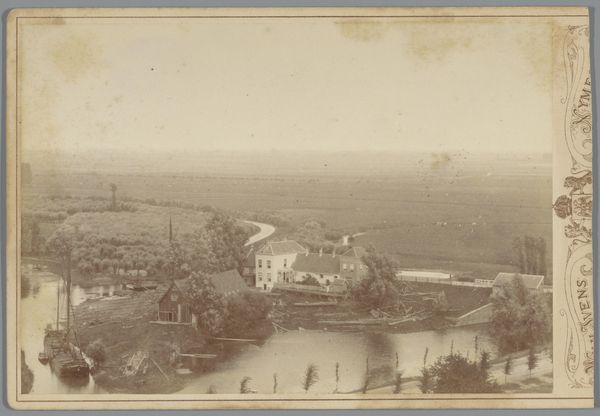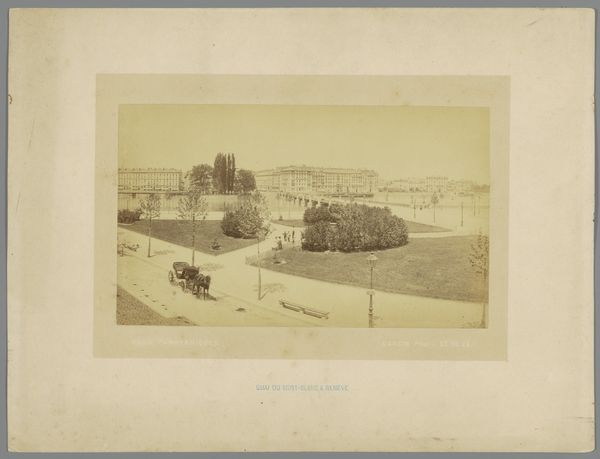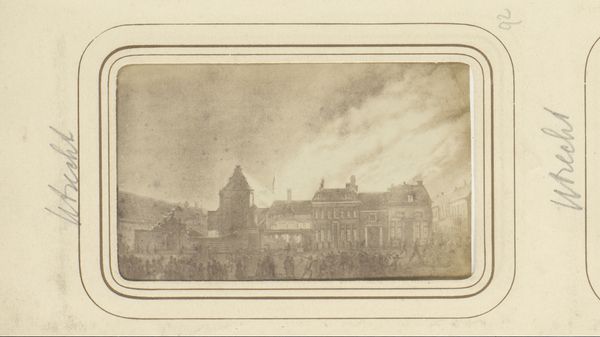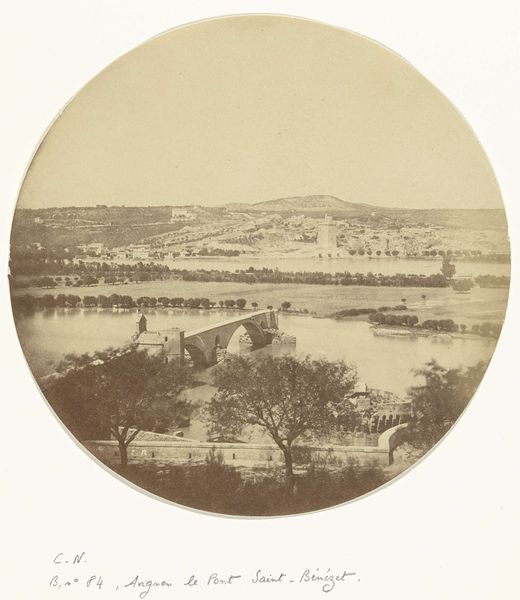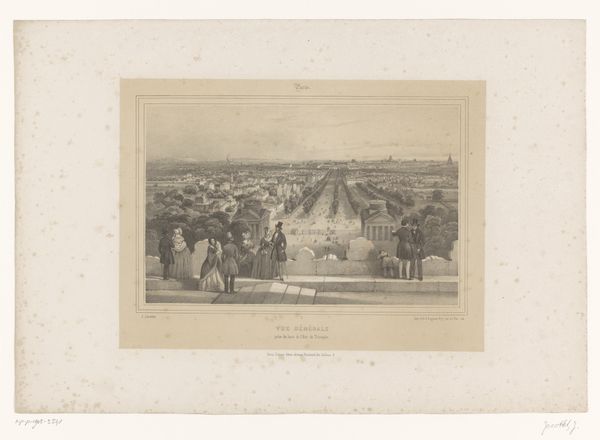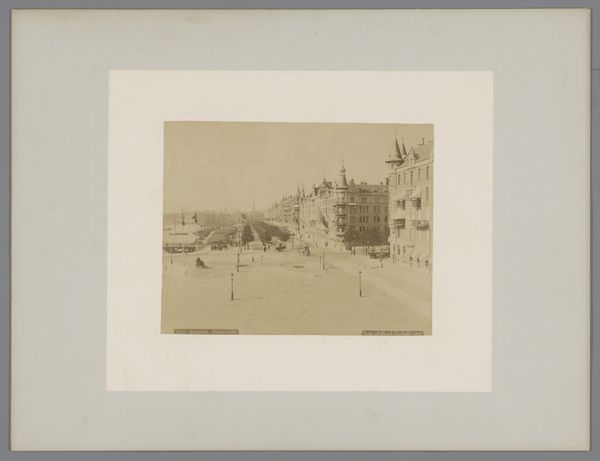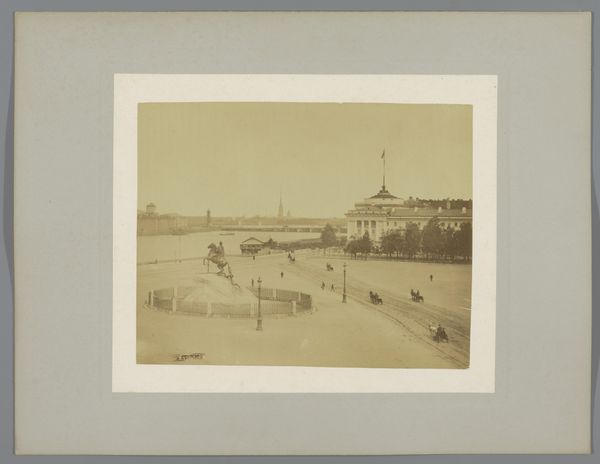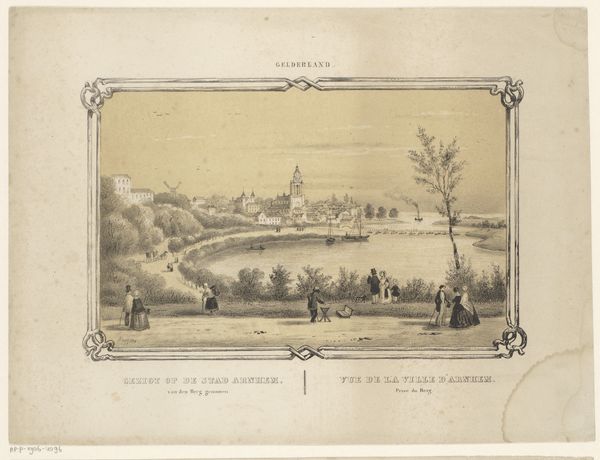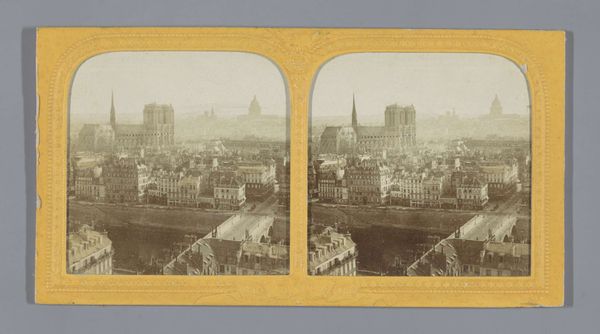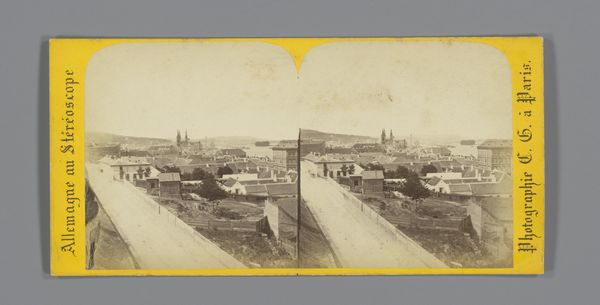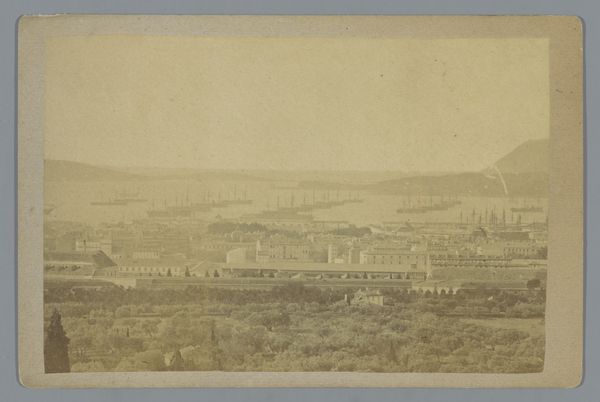
Asile impériale de Vincennes, vue de Charenton 1858 - 1859
0:00
0:00
daguerreotype, photography
#
16_19th-century
#
landscape
#
daguerreotype
#
photography
#
cityscape
Dimensions: Image: 7 1/16 × 6 1/2 in. (17.9 × 16.5 cm)
Copyright: Public Domain
Curator: Let's discuss Charles Nègre’s "Asile impériale de Vincennes, vue de Charenton," taken between 1858 and 1859. What are your initial thoughts? Editor: There's a stillness that I find immediately striking. The muted tones, almost sepia-like, and the composition lead the eye to that distant cityscape framed within this almost perfectly round vignette. There’s a subtle melancholic beauty here, but a haunting feeling as well. Curator: Indeed. The formal composition of this daguerreotype is striking, but consider also the subject: an aerial view of the Vincennes asylum near Charenton. This was taken at a time when psychiatric institutions were undergoing significant reform, transitioning from places of confinement to potential centers for therapy. Nègre used photography, a new medium, to document these social shifts. Editor: You are correct. I agree it seems rather like a photographic survey, then. I keep returning to that perfectly round framing; it makes everything seem slightly staged. And then, to view what appears to be patients walking, as if on display. Curator: It is a calculated effect. Nègre worked with photography’s unique capability to capture detail but within very specific aesthetic frameworks of pictorial composition influenced by painting. Here the photographic process intersects with institutional intentions. This photographic gaze creates its own discourse around labor, reform and even the visibility, or lack thereof, of certain people and activities in society. Editor: Looking closely, you're right; the details, rendered with that daguerreotype clarity, really underscore that feeling. Despite its muted quality, the textures of the garden, the stone walls and cloudscape, all create depth that speaks to more than just aesthetic intentions. This also brings up a challenge of photography as artistic document in how one might perceive its intention versus its objective registration. Curator: Absolutely, a balance which Nègre constantly navigates, offering us glimpses of societal structures but also artistic vision in the mid-19th century. Thank you for unpacking it with me. Editor: Of course, what a fascinating convergence of formal artistry and documentary urge—I see new layers each time I view it.
Comments
No comments
Be the first to comment and join the conversation on the ultimate creative platform.
